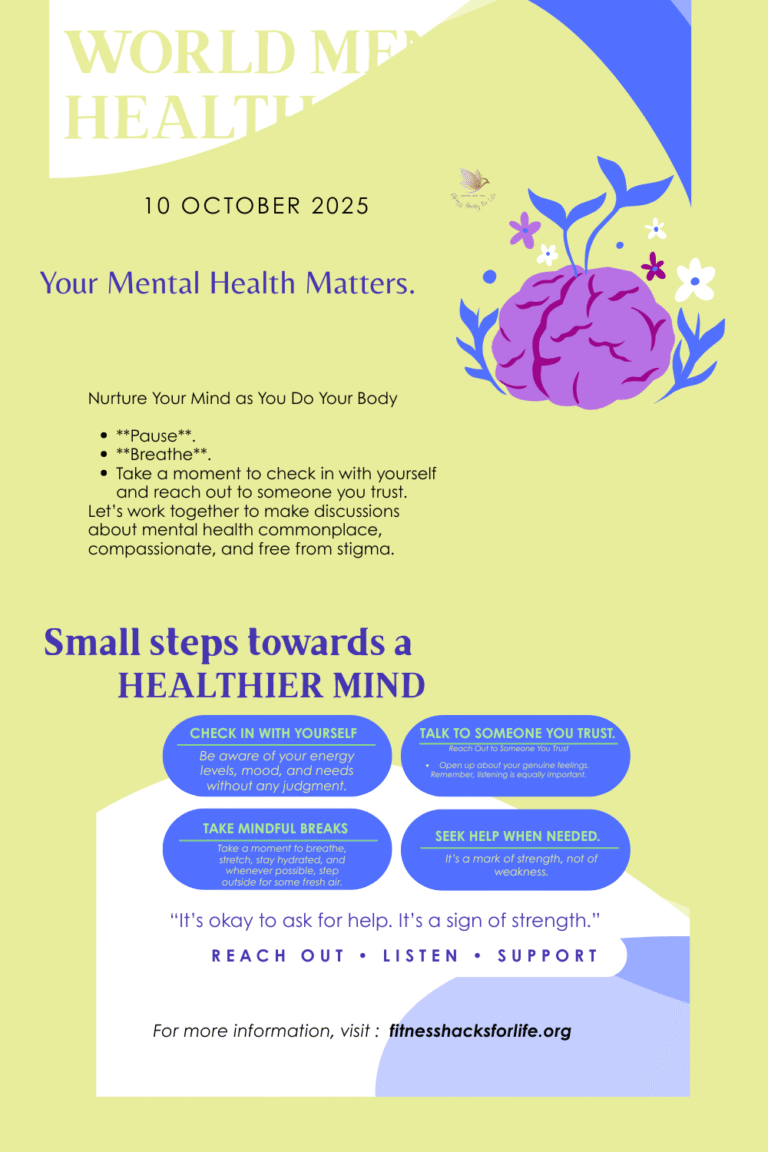The ‘Invisible Workout’: How to Burn an Extra 500 Calories a Day, Backed by Mayo Clinic Science
Ten ways to do the small things that will add up
You did everything right.
You crushed your 45-minute HIIT class. You sweated, you pushed, and your fitness tracker gave you a gold star. You burned 350 calories.
Then you sat down.
You sat in the car on your commute. You sat at your desk for 8 hours. You sat on the couch to watch your favorite show. You sat to eat dinner.
And you’re wondering why the scale isn’t moving.
The fitness industry has sold us on the idea that the only movement that matters is the grueling, scheduled, 60-minute “official workout.” But the science is clear: that one hour can be easily sabotaged by the other 23 hours of your day.
What if the real key to a lean, energetic body isn’t found in that one hour of pain, but in all the tiny movements you make throughout the day?
Welcome to the Invisible Workout.
The Fat-Burning Metric No One Talks About
In the scientific community, it’s known as NEAT, or Non-Exercise Activity Thermogenesis.
NEAT is the energy expended for everything we do that is not sleeping, eating, or sports-like exercise. It’s the energy we burn by simply living our lives.
- Pacing while on a phone call
- Tapping your foot while you work
- Walking to the mailroom
- Carrying groceries
- Fidgeting
It sounds trivial. It’s not. The caloric difference between a person with high NEAT and a person with low NEAT can be staggering. Seminal research on NEAT, led by Dr. James A. Levine at the Mayo Clinic, found that the variation in daily energy expenditure from NEAT between individuals can be as high as 2,000 calories per day (1).
For the average person currently living a sedentary lifestyle, consciously optimizing your Invisible Workout can realistically add up to an extra 300-800 calories burned per day.
Think about that. That’s the equivalent of a 5-mile run, but instead of pounding the pavement, you just integrated more movement into your existing routine. This is the single biggest hack for breaking through a weight loss plateau.
Your 1-Hour Workout Can’t Outrun an 8-Hour Chair
Let’s visualize it. Your “official workout” is like a single, big log you throw on a fire. It burns hot and bright for an hour.
Your “Invisible Workout” (NEAT) is the slow, constant smolder that keeps the fire burning all day and all night long.
Which one do you think burns more total fuel over 24 hours? For most of us, it’s the smolder.
In fact, research is frighteningly clear on this point. Studies published in top-tier journals like The Lancet have shown that high amounts of daily sitting time are associated with an increased risk of mortality, even if you get your 30-60 minutes of daily exercise (2). Your workout is vital, but it cannot fully undo the damage of being sedentary.
10 Micro-Hacks to Activate Your ‘Invisible Workout’ Today
You don’t need more time or more gym memberships. You just need to weave more movement into the life you already have.
- The “Walk & Talk” Rule: Never take a phone call sitting down again. Whether it’s for work or family, pace around your room or walk outside. A 30-minute call can easily add 2,000 steps.
- Become a Water Cooler Wanderer: Deliberately place your water bottle far away from your desk. Every time you need a sip, you’re forced into a short walk. This simple habit breaks up long periods of sitting.
- The “Commercial Break Commando”: Watching a show? The rule is you’re not allowed to sit during commercials. Do jumping jacks, walk in place, do pushups against the couch, or just tidy up the room.
- Park in the “Fitness Zone”: Stop hunting for the closest parking spot. Intentionally park at the far end of the lot. Those extra steps, multiple times a day, add up massively over a year.
- Carry, Don’t Cart: Grabbing just a few things at the grocery store? Ditch the cart and use a basket. This turns a simple chore into a functional loaded carry, engaging your core and upper body.
- The 2-Minute Chore Sprint: Set a timer for 2 minutes every hour you’re at home. In that time, do a small chore as fast as you can: wipe counters, put away dishes, vacuum one room. It elevates your heart rate and keeps your house clean.
- Take the Long Way: Whether you’re in the office or at the mall, never take the most direct route to the bathroom or exit. Weave through an extra aisle. Your metabolism benefits from every extra step.
- Embrace Fidgeting: The impulse to fidget is your body’s natural way of burning off excess energy. Studies have directly linked fidgeting to higher daily energy expenditure (3). So, tap your feet, bounce your knee, or use a standing desk and shift your weight often.
- The “One-Trip” Unload: When bringing in groceries from the car, try to carry as much as you safely can in one trip. This turns a simple task into a full-body strength and endurance challenge.
- Set a “Stand-Up” Trigger: Choose a common daily event (like receiving an email from your boss, or your phone buzzing) as your cue to immediately stand up for 60 seconds.
The Takeaway
This isn’t about ditching your gym routine. That one hour is great for your heart, your strength, and your mental health.
This is about fixing the other 23 hours.
Don’t let a sedentary day erase your hard work. By turning your daily life into your workout, you are tapping into a powerful, scientifically-validated mechanism for energy expenditure that doesn’t rely on willpower or motivation.
Your Challenge: Pick just three of these hacks and do them for one week. Don’t change anything else. See how you feel—and what the scale says—in seven days.
Drop a comment below: Which hack are you going to try first?
References:
- Levine, J. A. (2002). Non-exercise activity thermogenesis (NEAT). Best Practice & Research Clinical Endocrinology & Metabolism, 16(4), 679-702.
- Ekelund, U., Steene-Johannessen, J., Brown, W. J., Fagerland, M. W., Owen, N., Powell, K. E., … & Lee, I. M. (2016). Does physical activity attenuate, or even eliminate, the detrimental association of sitting time with mortality? A harmonised meta-analysis of data from more than 1 million men and women. The Lancet, 388(10051), 1302-1310.
- Levine, J. A., & Lanningham-Foster, L. M. (2005). The role of nonexercise activity thermogenesis in obesity. In Endotext. MDText.com, Inc.







